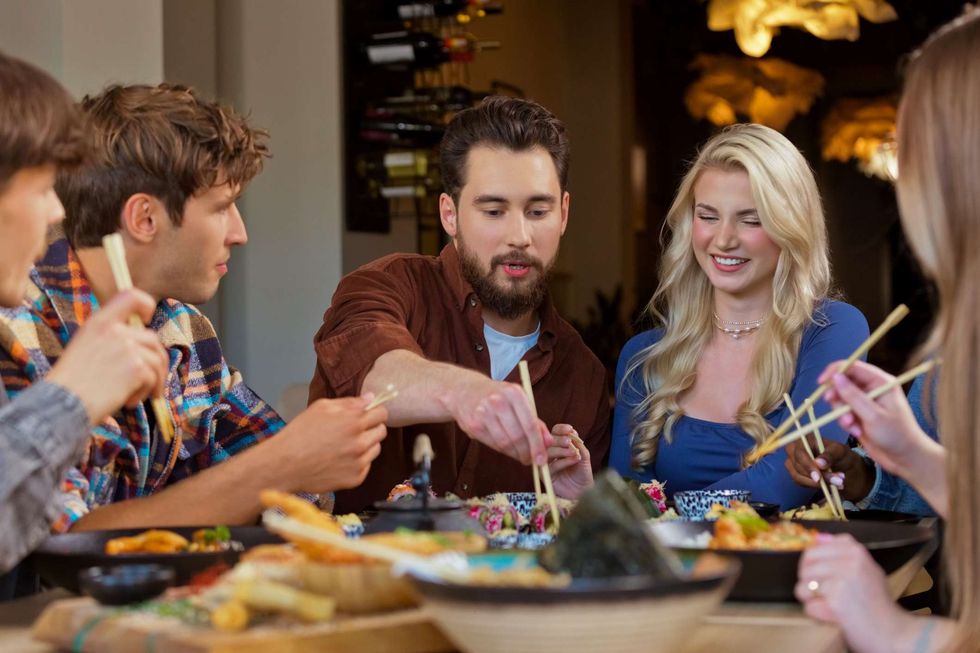Highlights:
- Communal dining tables are becoming popular again, especially among Gen Z.
- Surveys show younger diners enjoy meeting strangers, while many older diners prefer privacy.
- Shared tables help tackle loneliness and encourage real-life conversation in a digital age.
- Restaurants are adapting with supper clubs, shared platters and “come alone” nights.
- The trend reflects a wider shift toward connection, experience and affordable social dining.
Walk into a place to eat and there is just one huge table. Everyone there is a stranger, talking, laughing, passing bowls around like they already know each other. For some older diners, the setup feels odd. It can come across as too open, almost like someone stepping into your personal space. But younger diners see it differently. For Gen Z, that setup is the fun part, the chance that the person next to you might turn into a friend, or at least a good conversation.
A 2025 Resy survey shows a clear generational split: 90% of Gen Z enjoy communal tables, compared with 60% of Baby Boomers. Beyond numbers, the social benefits are real; making friends, striking up conversations, even finding a date. For a generation often described as “the loneliest,” dining together offers a rare sense of connection.

Why Gen Z is embracing shared tables
- Connection in a digital age
A lot of young people spend most of their day online, so talking face to face can feel strange at first. Sitting at a shared table takes some of that pressure away and makes starting a conversation easier. You sit beside strangers, and it is up to you whether you chat or simply eat in silence. As Pablo Rivero from Resy puts it, the unpredictability is part of the appeal — you could end up next to anyone.
- Combatting loneliness
Oxfam’s 2025 survey reported that nearly half of 16- to 28-year-olds regularly experience feelings of isolation. Sitting down to share food with unfamiliar faces responds to a basic human need for connection, and doctors say there is science to support its emotional benefits.
- Socially smart dining
Socially aware Gen Z people also appreciate communal tables. They are looking for experiences rather than expensive nights out, and love the Instagram worthy setup that a long, shareable table presents. Split platters are a great way to connect with others and have fun while keeping costs manageable.

What makes communal dining work
- Restaurants are adapting
Regarding communal dining, restaurants are getting creative in a world of staff shortages, increasing costs and people's demands for social experiences. A single long table can fit more diners than two booths and encourages shareable menu items. Supper clubs, “come alone” nights, and curated group dinners are becoming common.
- Balancing vibrancy with privacy
Good venues offer choice. Not every diner wants to sit with strangers, so these zones make everyone comfortable. Design consultants mentioned that this balance increases satisfaction and encourages repeat visits, because happy diners linger longer and often enjoy the atmosphere.
- Safety nets for shy diners
For anxious or timid guests, the communal table can also be a social buffer. You can join a conversation at your own pace, or perhaps simply observe. This concept of “controlled socialisation” is ideal for a generation that grew up with dating apps, lockdowns, and digital fatigue.

The flip side: why some diners hesitate
However, hygiene, noise levels, and clashing personalities are valid concerns, and the problem of the “annoying neighbour” can turn a meal into a real test of endurance. Restaurants have to sit people strategically, but even then, there is no guarantee that communal dining will not divide people, particularly those of older generations.
Cultural context also matters. In the UK, traditional table manners and personal space have made communal seating seem a little unfamiliar to some. Still, younger diners are willing to experiment, seeing the benefits outweigh the risks.

A trend with roots and future
Communal dining is not new. During WWII, the UK set up British Restaurants to feed people cheaply and bring them together. After 9/11, shared meals also saw a small revival. In each case, people sought connection during tough times.
Now, Gen Z is doing the same. Years of lockdown and online life left them craving real contact. Long tables let people meet others and share a meal. It is not just a trend. For young diners, sitting together is about talking and being with others. The table is for connecting, not just eating.

So, is this just a trend?
Maybe. But it feels bigger than that. After years of screens and social distance, a generation is choosing to sit close together. They are choosing the chance of an awkward silence for the possibility of a real conversation. In a noisy world, the long, shared table has become a quiet bet on human connection.














